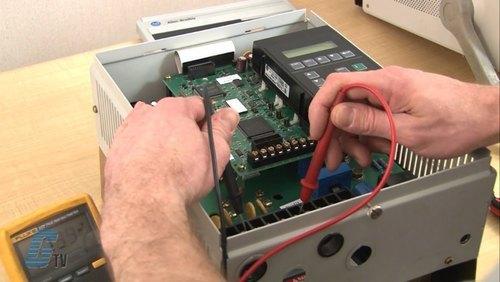Servo drives are crucial components in modern automation and motion control systems. They convert low power command signals from a control system into high power electrical signals to drive servo motors. These drives are integral in achieving precise control over speed, position servo drive repair, and torque, making them indispensable in various industries, from manufacturing to robotics. However, like any sophisticated technology, servo drives can experience faults or failures that necessitate repair. This guide delves into the essential tips and techniques for repairing servo drives to ensure they maintain optimal performance.
Understanding Servo Drive Components and Common Issues
Before diving into repair techniques, it’s important to understand the primary components of servo drives and the common issues they encounter:
Power Supply Unit (PSU): Converts and supplies power to the servo drive. Common issues include voltage fluctuations, power surges, and PSU failures.
Control Board: The brain of the servo drive, processing input signals and executing control algorithms. Issues often involve firmware corruption, component failure, or signal interference.
Interface Modules: Facilitate communication between the servo drive and other system components. Problems here can include connectivity issues or damaged ports.
Feedback System: Monitors the position and speed of the servo motor. Faulty encoders or resolvers are typical problems.
Cooling System: Keeps the drive at an operational temperature. Overheating can occur due to fan failures or clogged vents.
Diagnosing Servo Drive Problems
Effective diagnosis is the first step towards successful repair. Here’s a systematic approach to diagnosing servo drive issues:
Visual Inspection: Look for obvious signs of damage such as burnt components, loose connections, or physical wear and tear.
Error Codes and Alarms: Most modern servo drives come with diagnostic LEDs or display panels that show error codes. Refer to the manufacturer’s manual to interpret these codes.
Signal Testing: Use an oscilloscope to check signal integrity and identify any discrepancies in the control signals.
Component Testing: Test individual components like capacitors, resistors, and transistors using a multimeter to ensure they are functioning correctly.
Software Diagnostics: Use specialized diagnostic software provided by the manufacturer to run tests and monitor drive performance.
Repair Techniques and Best Practices
Once the issue is diagnosed, the following techniques and practices can be employed to repair the servo drive:
Replacing Faulty Components:
Capacitors and Resistors: These are often the first components to fail. Ensure you use replacements with the same specifications.
Power Transistors and Diodes: Critical for the drive’s power section, these should be replaced with high-quality components to prevent future failures.
Integrated Circuits (ICs): Handle with care and ensure correct orientation during replacement.
Firmware Reinstallation or Update: If the control board’s firmware is corrupted, reinstalling or updating the firmware can resolve many issues. Always use firmware versions recommended by the manufacturer.
Re-soldering Connections: Cold solder joints or broken connections can cause intermittent faults. Re-solder any suspicious joints with precision.
Cleaning and Maintenance:
Dust and Debris Removal: Clean the drive thoroughly, especially the cooling vents and fan.
Thermal Paste Replacement: If the drive uses heat sinks, replace the thermal paste periodically to maintain efficient heat dissipation.
Calibration and Testing: After repairs, calibrate the drive to ensure it meets operational specifications. Use diagnostic software to run performance tests and verify the drive’s functionality.
Preventive Measures for Longevity
Preventive maintenance can significantly extend the life of servo drives and reduce the frequency of repairs. Here are some best practices:
Regular Inspections: Schedule routine visual inspections and performance tests to catch potential issues early.
Clean Environment: Keep the servo drives in a clean, dust-free environment to prevent overheating and contamination.
Stable Power Supply: Ensure a stable power supply with surge protection to protect the drives from voltage spikes.
Proper Ventilation: Maintain adequate ventilation around the servo drives to prevent overheating.
Firmware Updates: Regularly check for and install firmware updates from the manufacturer to benefit from the latest improvements and bug fixes.
Conclusion
Servo drives are complex devices that require careful attention to detail when it comes to maintenance and repair. By understanding the common issues, employing systematic diagnostic methods, and using precise repair techniques, you can ensure your servo drives operate at peak servo drive repair performance. Additionally, implementing preventive maintenance practices will help extend the lifespan of your servo drives, reducing downtime and maintenance costs. Whether you’re a seasoned technician or a novice in the field, following this comprehensive guide will equip you with the knowledge and skills needed to effectively repair and maintain servo drives.
Follow Us More Links:-
Follow Us On Facebook:- https://www.facebook.com/synchronics
Follow Us On Instagram:- https://www.instagram.com/synchronicselectronics/
Follow Us On Twitter:- https://x.com/synchronics
Follow Us On Linkedin:- https://in.linkedin.com/company/synchronics
Address:- 4th Floor, Lotus Enora, Opp. Rutu Villa Bunglows, 24 Mt. Main Road, New Alkapuri, Gotri, Vadodara 390 021, Gujarat (INDIA)
Call Us:- +91–704–308–4455 || +91–704–309–4455 || +91–265–400–1555 || +91–265–356–1183
Email Us:- [email protected]

